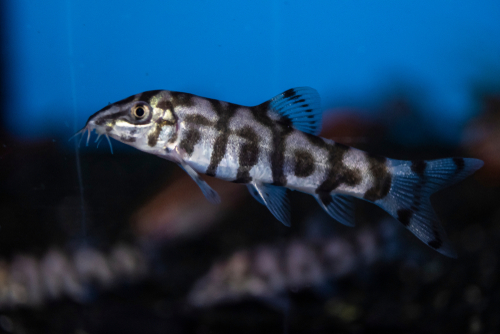The yoyo loach, scientifically known as Botia almorhae, is an interesting and playful freshwater fish that adds personality to any aquarium setup. Its unique appearance and active behaviors make it a popular choice for aquarium enthusiasts.
Native to the rivers of India and Pakistan, yoyo loaches can thrive in a well-maintained and suitably sized aquarium replicating their natural habitat.
These fascinating bottom dwellers showcase a distinctive color pattern consisting of dark and light alternating bands along their bodies, which resembles a YO-YO and ultimately leads to their unique name.
Yoyo loaches usually reach a maximum size of about 6 inches, making them suitable for medium to large aquariums.
Their diet primarily consists of small insects, crustaceans, and plant matter, which can be provided through high-quality pellets or frozen food in a captive environment.
Caring for yoyo loaches involves understanding their social nature and territorial instincts.
Providing an engaging habitat with hiding spots, like caves andplants, and maintaining clean and stable water conditions are essential for their well-being. Tank mates should be chosen wisely to ensure compatibility and avoid aggression.
Contents
Key Takeaways
- Yoyo loaches are playful freshwater fish native to India and Pakistan, with a distinct color pattern making them popular choices for aquariums.
- They require a well-maintained aquarium setup, high-quality food including plant matter and small insects, and hiding spots for their comfort and survival.
- It is crucial to select compatible tank mates and provide an engaging habitat for the social and territorial nature of yoyo loaches.
Also don’t miss out on these other popular fish posts for your aquarium:
Origin and Habitat
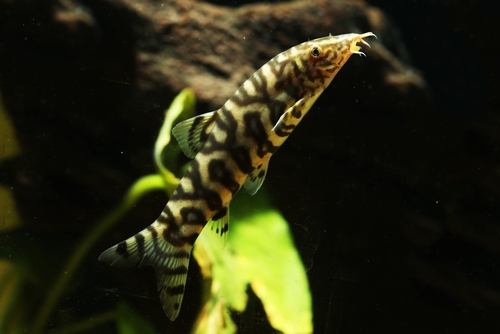
Geographical Distribution
The YoYo Loach (Botia almorhae) is primarily found in the freshwater regions of Northern India, Nepal, and Pakistan. Its distribution covers the Ganges Basin, where it inhabits the rivers and tributaries that flow through these areas.
Natural Habitat
YoYo Loaches thrive in still water environments with a preference for slow-moving rivers, streams, and ponds. Their natural habitat consists of clean water with an abundance of rocks, submerged logs, and aquatic plants, providing ideal hiding places and feeding grounds.
Physical Features
The Yoyo loach has several distinctive physical features that must be put into consideration if you want to properly set up its tank. Here are some of the physical features of Yoyo loach.
Appearance
The YoYo Loach is a unique fish with a distinctive appearance. Its body shape is long and slender, ideal for navigating the bottom of its natural habitat.
One of the most noticeable features of the YoYo Loach is its pointed head, which lends an air of curiosity to its overall look. Emphasizing its name, letters ‘Y’ and ‘O’ can be found on its body, created by its black stripes and the lighter color of its skin.

Yoyo Loaches have some variations when it comes to appearance that make them outstanding. But in all, loaches have something in common: they all have a long and slender body. This communal aquatic friend has some sort of a nozzle. It’s flat on the bottom, which gives the fish the stability to rest and balance on the sand.
These fish can be recognized mostly by their mouths. Each specimen has four hairs in a pair. These mouth-protruding barbels are employed to sense food in their immediate environment.
Colors
The YoYo Loach has a remarkable color pattern that makes it stand out from other loach species. Its base color is typically a light gray or beige shade, interspersed with bold black stripes. These stripes can vary in thickness and intensity, creating intricate and engaging patterns.
Yoyo loaches can differ in Color and design from species to species. Typically, fish have a silver base color. It’s possible to spot some fish that have a faint blue color. Some even have gold or yellow base coloration.
Aside from that, primary color is an attractive pattern that captivates enthusiasts. They have reticulated black dots covering their entire body and lighter colors that randomly form dots and complement the black.
For some Yoyo loach species, the reticulated patterns consist of more faint lines and dots, making the effect look a little repressed. However, some species have a thicker line that is more pronounced. Yoyo Loaches’ appearance is distinctive in that it is subject to alter with time. The base silver tone tends to get darker. As a result, the reticulated pattern becomes more subtle and gives the fish a more elegant appearance
Size and Lifespan
YoYo Loaches are not particularly large fish, generally staying within a manageable size range for most aquarium enthusiasts. On average, they grow to lengths of 8-12 cm (3-5 inches).
With proper care and a suitable environment, YoYo Loaches can live a fairly long and healthy life. Their average lifespan is about 5-8 years, though some individuals have been known to live for more than a decade.
Diet and Feeding
YoYo loaches are omnivorous fish, which means they have a diverse diet that includes both plant-based and meat-based foods.
They are known for their voracious appetite and can be seen scavenging for food on the bottom of the tank most of the time. To keep them healthy, it is essential to provide a balanced diet with adequate amounts of protein, vitamins, and minerals.
Feeding Schedule

YoYo loaches should be fed small meals 2-3 times a day to mimic their natural feeding behavior in the wild.
Overfeeding can lead to bloating and other health issues, so it is essential to measure the amount of food provided at each feeding. Generally, it is recommended to only provide enough food that the fish can consume within a minute or two.
Recommended Foods
To maintain a balanced diet, YoYo loaches should be fed a variety of high-quality foods, including flakes, pellets, frozen, and live foods. Here are some recommended food options:
- Flakes and pellets: Nutrient-rich, high-quality flakes or pellets should be the main staple of their diet. These can be specifically designed for bottom-dwelling fish or for omnivorous species.
- Frozen and live foods: Frozen brine shrimp and bloodworms are excellent protein sources for YoYo loaches. Live foods, such as daphnia, tubifex worms, and mosquito larvae, can be introduced as treats or for enhancing their coloration and overall well-being.
- Vegetables: To provide essential vitamins and minerals, incorporate blanched vegetables such as zucchini, cucumber, spinach, and peas in their diet. Make sure to remove any uneaten vegetables from the tank within 24 hours to avoid fouling the water.
By offering a diverse diet that includes a mix of pellets, flakes, frozen foods, and vegetables, YoYo loaches will receive all the necessary nutrients to thrive in their aquatic environment. Remember to keep the portion sizes small and adjust the feeding schedule based on the needs of your fish.
Habitat Setup
The journey to a lively and healthy living Yoyo loach species, begins with the habitat set. You can get the desired result concerning your aquatic pet friends if you don’t, at least, replicate their natural habitat in a tank. Here are some key factors to consider when setting up a Yoyo loach tank.
Tank Size
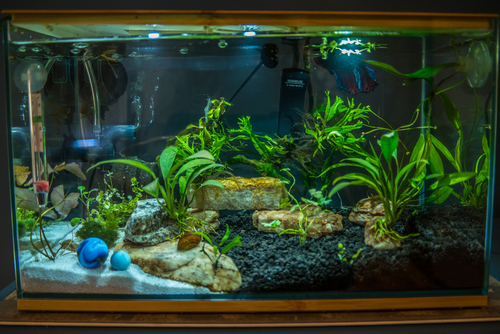
To provide a healthy environment for your Yoyo loach, a minimum tank size of 20 gallons (76 liters) is advised. These fish are active swimmers and appreciate space to move around in their aquarium.
However, if you’re keeping more than one Yoyo loach, it’s essential to increase the tank size by 10 gallons (38 liters) for each additional fish.
Water Parameters
Yoyo loaches thrive in stable water conditions with good water quality. Maintain a temperature between 75°F (24°C) to 86°F (30°C), a pH level of 6.0 to 7.5, and a hardness of 2 to 12 dGH to mimic their natural habitat. It’s important to monitor water parameters and ensure cleanliness using a high-quality filter.
| Parameter | Recommended Range |
| Temperature | 75°F – 86°F |
| pH | 6.0 – 7.5 |
| Hardness (dGH) | 2 – 12 |
Supplemental Features
A well-suited habitat for Yoyo loaches includes a soft sand substrate, as these bottom dwellers love digging and burrowing in sand. Additionally, provide plenty of hiding spots with rocks, caves, and driftwood, accommodating their skittish nature and offering them a sense of security.
Aquatic plants are another crucial aspect of the Yoyo loach’s environment. Consider incorporating plants such as Java ferns, Anubias, and Cryptocoryne species, which can tolerate the low lighting conditions Yoyo loaches prefer.
However, be prepared for digging, as these fish may uproot delicate plants.
Lastly, equip the aquarium with a secure lid to prevent the Yoyo loach from jumping out and ensure that the lighting setup doesn’t create excessive brightness, as they are more comfortable in a dimly lit environment.
Behavior and Social Interaction
Temperament
YoYo Loaches are generally peaceful fish, known for their active and social behavior. They tend to get along well with their tankmates and will engage in playful interactions.
However, in some cases, they may exhibit semi-aggressive behavior when kept with smaller or slower-moving species, particularly during feeding times.
Activity Cycle
These loaches are mostly nocturnal, meaning they tend to be more active during the nighttime hours.
During the day, they may prefer to hide in the plants or crevices of their tank, only venturing out to explore or hunt for food. Their active nature is a key aspect of their behavior and makes them interesting subjects for aquatic enthusiasts.
Socializing With Other Species
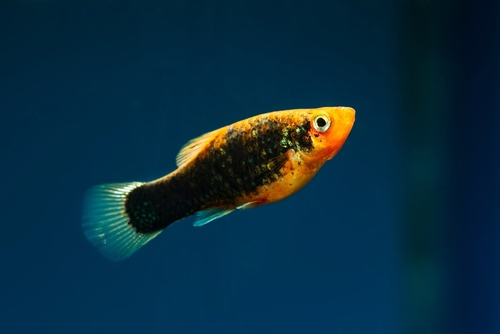
YoYo Loaches can coexist with a variety of other fish species in a community aquarium setting, as long as they have similar temperaments and environmental requirements.
Good tankmates for YoYo Loaches include other peaceful, active, and social species like barbs, rasboras, and some tetras. It is best to avoid housing them with shy or very slow-moving fish that may be bothered or outcompeted by the lively and energetic nature of the YoYo Loach.
Breeding
Sexual Dimorphism
YoYo loaches exhibit sexual dimorphism, which allows for differentiation between males and females.
Males tend to be more slender and have a pointed genital papilla, while females are more rounded and have a rounded genital papilla. Additionally, females may have a fuller body, especially when carrying eggs.
The males are more likely to be plumper, particularly as they get full of eggs. Males, on the other hand, often have noticeable reddish-barbed lips.
Breeding Environment
To encourage breeding in YoYo loaches, it is important to create a suitable environment that mimics their natural habitat. This can be achieved by:
- Maintaining water temperature between 75-80°F (24-26°C)
- Providing hiding places using plants, rocks, and driftwood
- Ensuring a soft, sandy substrate for burrowing
- Offering a varied diet of live and frozen foods
Breeding Process
Breeding YoYo loaches can be challenging, as they are known to be relatively secretive about their breeding habits. However, with patience and dedication, it is possible to achieve successful breeding:
- Introduce a group of healthy, adult yo-yo loaches into the breeding tank, with a ratio of two or three males to one female
- Ensure optimal water conditions by closely monitoring water parameters (pH 6.5-7.5, GH 4-12, KH 3-5)
- Stimulate breeding with regular water changes (20% every two weeks) to mimic the conditions in their natural environment
- Frequently feed the loaches with high-quality live and frozen foods to provide sufficient nutrients for egg production
- Keep a close watch on the tank to observe signs of breeding behavior, such as male loaches chasing and nudging the females
- After successful spawning, quickly remove the adult loaches from the breeding tank to prevent them from eating their eggs
- Monitor the development of the eggs, which will typically hatch within 3-5 days
By following these steps and providing a suitable environment, breeding YoYo loaches can be achieved with careful attention and perseverance.
Compatibility and Tank Mates
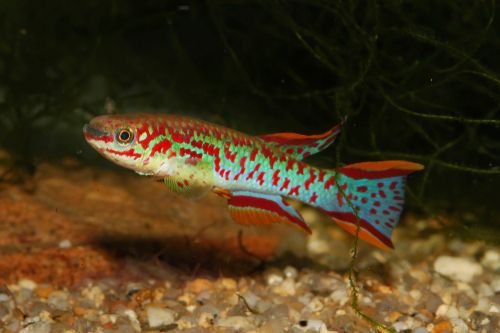
Compatible Species
YoYo loaches are peaceful freshwater scavengers that can get along well with other non-aggressive fish species. They appreciate the company of their own kind, so keeping them in groups of at least 3 to 5 will ensure their happiness.
Smaller-sized schooling fish such as tetras, danios, rasboras, and barbs are excellent tank mates for YoYo loaches, given that they can occupy the middle and top sections of the tank.
Other bottom dwellers like corydoras catfish make good companions, as both scavengers search for food together and coexist without any issues.
Additionally, larger species like angelfish can also share a tank with YoYo loaches, as long as there is enough space for both to swim and live comfortably.
Aquarium inhabitants, such as shrimp, don’t tend to cause problems for YoYo loaches and can provide an interesting dynamic in the tank.
Incompatible Species
Compatibility issues may arise with fish that possess aggressive or territorial behaviors. YoYo loaches are not suitable tank mates for larger and top-dwelling fish such as guppies, which may harass or nip at the peaceful YoYo loach.
Another incompatible species is the clown loach, a larger relative of the YoYo loach. Despite being peaceful, its significant size difference makes it unsuitable to share a tank with the smaller YoYo loach.
When considering tank mates for your YoYo loach, it is important to select species that share similar water parameters and peaceful temperaments, ensuring a harmonious and thriving environment.
Health and Disease
Common Diseases
Yoyo loaches are often the first species in a tank to fall whenever disease strikes. This may be one of the drawbacks of keeping this species. One of the reasons is that the skin of these fish lacks scales or is very tiny. Compared to other fish’s scales, they don’t provide nearly as much protection.
As a result, they may develop fungal and parasite illnesses before other tank inhabitants in a community tank. Also, they react differently to drugs found in water.
Some of the common diseases they may face include Ich (Ichthyophthirius multifiliis), which manifests as white spots on the fish’s body, and Fin Rot caused by bacterial or fungal infections leading to ragged fins.
It is important to note that beginner aquarists might face more challenges in maintaining the health of their yoyo loach, while intermediate and advanced fish keepers have more experience in dealing with these issues.
Algae growth in the tank could affect the yoyo loach’s health as well. Excessive algae can lead to reduced water quality and in turn, affect the overall well-being of your yoyo loach.
Prevention and Treatment
To prevent these common diseases and maintain optimal health for your yoyo loach, it is necessary to employ some vital practices.
Adequate water quality can be achieved by ensuring regular water changes, proper filtration, and stable water parameters. It is also essential to avoid overcrowding the tank as this can lead to stress and spread of diseases.
- Ich: Treating Ich requires raising the aquarium’s temperature to around 86°F (30°C) for about three days. In addition, the use of a copper-based medication can effectively eradicate the parasite. However, voracious diggers like Yoyo loaches may be sensitive to copper, so be cautious using the appropriate dosage and monitor them closely.
- Fin Rot: Treatment of Fin Rot entails a thorough cleaning of the tank and water change to reduce the number of bacterial or fungal pathogens. Applying a broad-spectrum antibiotic or antifungal medication can help control the infection further.
- Algae Control: Implementing natural algae controls like introducing algae-eating tank mates or live plants can help keep algae growth in check. Moreover, limiting lighting hours and reducing excess nutrient load in the tank may prevent algae blooms.
When dealing with yoyo loach health issues, it is crucial to have a confident, knowledgeable, neutral, and clear approach to ensure the best outcome for your aquatic pet.
Always remember to consult veterinary advice when in doubt to provide the right care for your yoyo loach.
Conservation Status
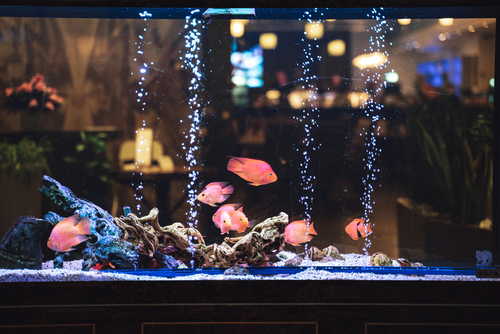
The conservation status of the yoyo loach is currently categorized as Least Concern. This classification is given by the International Union for Conservation of Nature (IUCN) when a species is evaluated and found to have a low risk of extinction or population decline.
This is due in part to the yoyo loach’s wide distribution and adaptability to various habitats.
Found in slow-moving rivers and tributaries throughout Asia, yoyo loaches have demonstrated resilience in the face of environmental changes. Additionally, they have a reputation for being relatively hardy, able to withstand fluctuations in water conditions.
Despite their Least Concern status, yoyo loaches still face certain threats that need monitoring and mitigating measures.
For example, habitat loss due to human activities, such as agriculture and construction, can impact their living spaces. Invasive species may also pose a threat, as they can outcompete yoyo loaches for food and resources.
It is important for conservation organizations and governments to keep a close eye on yoyo loach populations, and to implement appropriate management plans to ensure their continued well-being.
By maintaining a steady population and safeguarding their habitats, the yoyo loach can continue to thrive and contribute to the biodiversity of freshwater ecosystems.
Frequently Asked Questions
What is the ideal tank size for Yoyo loaches?
The ideal tank size for Yoyo loaches is at least 30 to 40 gallons. This allows these active fish to have ample space to swim, explore, and display natural behaviors.
It is essential to provide them with an environment that has hiding spots, such as caves and plants.
What are suitable tank mates for Yoyo loaches?
Yoyo loaches are generally peaceful and can coexist with many other species. Suitable tank mates include other similar-sized and non-aggressive fish such as tetras, corydoras, gouramis, and rasboras.
Avoid housing them with large, aggressive fish or fish that are small enough for the Yoyo loach to consider as prey.
How long do Yoyo loaches typically live?
With proper care and appropriate tank conditions, Yoyo loaches can live up to 8-10 years. Maintaining good water quality, a balanced diet, and regular tank maintenance play essential roles in the health and longevity of these fish.
What is the temperament of Yoyo loaches?
Yoyo loaches have a playful and inquisitive temperament. They are energetic, active swimmers, and can be observed rooting around the tank’s substrate in search of food.
Although they are generally peaceful, they can sometimes display minor territorial behaviors, especially when kept in small groups or inadequate spaces.
Do Yoyo loaches eat snails?
Yes, Yoyo loaches are known to eat snails, making them an effective natural solution for controlling snail populations in your aquarium.
They actively search for small snails to consume, but it is essential to remember that Yoyo loaches should not solely rely on snails for their diet.
How many Yoyo loaches can be kept together?
It is recommended to keep at least 5-6 Yoyo loaches together in a group. This ensures they have companionship and a sense of security, which can minimize stress and aggressive behaviors.
It is essential to ensure your tank is large enough to accommodate this number of fish while providing adequate hiding spots and swimming areas.

Ian Sterling, founder of Fishlab.com, began his aquarium journey over 30 years ago, driven by a deep fascination for fish and their diverse personalities. His website, Fishlab.com, is dedicated to making fishkeeping accessible and enjoyable, offering beginner-friendly guidance, expert insights, and a community for aquarists to connect and share experiences.


